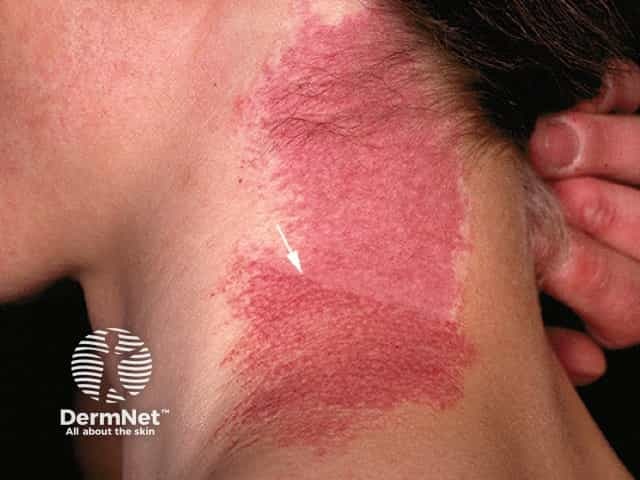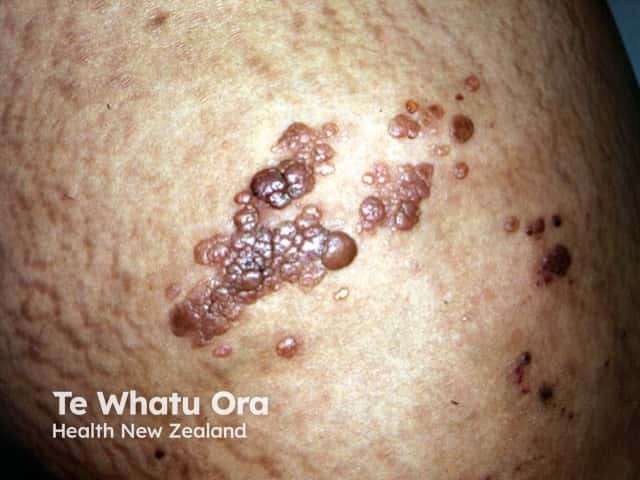Main menu
Common skin conditions

NEWS
Join DermNet PRO
Read more
Quick links
Author: Brian Wu, MD candidate, Keck School of Medicine, Los Angeles, USA. DermNet New Zealand Editor in Chief: Hon A/Prof Amanda Oakley, Dermatologist, Hamilton, New Zealand. December 2016.
Introduction Demographics Causes Clinical signs Complications Diagnosis Treatment Outlook
Cobb syndrome is a genetic disorder characterised by vascular lesions and neurological deficits. It is also known as spinal arteriovenous metameric syndrome (SAMS) and cutaneous meningospinal angiomatosis.
While first described by Berenbauch in 1890, the syndrome is most closely associated with Dr Cobb’s description of a clinical case in 1915.
Cobb syndrome is extremely rare.
The cause of Cobb syndrome is not completely understood. It is believed that somatic mutations in the neural crest or mesoderm are responsible for its development fairly early in the development of the embryo.
Cobb syndrome presents with multiple vascular lesions:
Signs of neurological involvement include:
If neurological symptoms do occur, they can happen in intermittent episodes, gradual progression, or with sudden onset.
Structural abnormalities of the urinary tract are also reported.

Capillary vascular malformation

Lymphatic vascular malformation

Angiokeratomas
Possible complications of Cobb syndrome include:
Cobb syndrome is diagnosed by the presence of multiple cutaneous vascular lesions and neurological defects. Spinal vascular lesions associated with Cobb syndrome can be diagnosed by MRI, although CT scans, radiography, or angiography can also be used for detection.
Treatment for Cobb syndrome may include:
The outlook for children with Cobb syndrome is dependent upon: